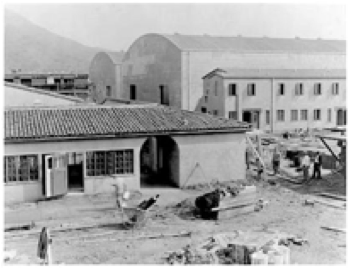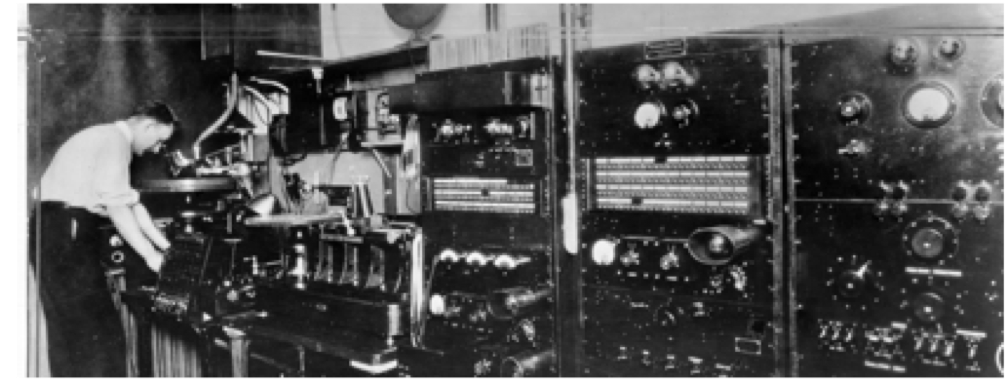Camera #153 - a 1928 Survivor
By Ed Johnson
It is June 1928. Warner
Brothers Pictures is officially one of the more successful studios in Hollywood
after years of being a poverty row also-ran. Dramatic changes were coming fast
and furious.
The reason is they are
the first studio to successfully bring sound to the
movies with their Sound On Disk Vitaphone system in 1927. The
early sound films were mostly shot in New York at the Vitagraph studios (which is where the name VitaPhone came
from.) Loaded with cash, Jack Warner is in the process of finalizing purchase
of First National Pictures studios. That and owning VitaPhone including its exclusive licensing deals with Western Electric would be a power combination in the industry.

First National Pictures had been in
the process of building the first purpose designed film production studios from
the ground up. Fox Pictures was close behind. As Jack walked around the
on-going mud and construction, VitaPhone technicians are adding
sound treatments to the new sound stages and building recording rooms with
tunnels and cableways connecting it all together.

In 1928, The Mitchell Camera Company
had ramped up production to meet the demand of their popular and modern Mitchell
camera to an average of one camera per month which would more than double in the next year. National had been an early convert to Mitchell Cameras and Jack could
see the advantage of staying with one standard camera for his new operations.
The early VitaPhone features were all shot with Bell&Howell 2709 cameras but due to the added stress of
the dual sound drive systems, these cameras were nearing an early end and
becoming expensive to keep in repair.
VitaPhone was directed to purchase and modify 12 Mitchell cameras for the new operations.
These cameras would become the backbone for a massive uptick in all sound
features to be produced in the future. By December 22, 1928, Mitchell camera #153 was the fourth of the 12 new Mitchells to be delivered.
For some time, in addition to the
Mitchells already in the First National inventory, this was the largest number
of Mitchell Cameras owned by a single studio.
Amidst the chaos, Warners produced 86 feature films of which would only
continue to be a near constant for many years. #153 was most certainly a major
production asset well into the 1950s at Warners. At this point in the
story, let us take a brief look at the VitaPhone system and its importance to the sound film development.

 Even though in a few
short years, the sound on disk system was superseded by the much more
dependable sound on film system that had the sound physically on the film
itself, The VitaPhone system solved many of the
problems of double system sound recording that in essence is still a feature of
sound film production today. 1) motorized synchronization driving both camera and recording device 2) sound proofing of
cameras 3) how to edit picture to sound (albeit a bit primitive) 4) Microphone
design and placement 5) amplification of theater sound and 6) a system of
recording to projection of picture.
Even though in a few
short years, the sound on disk system was superseded by the much more
dependable sound on film system that had the sound physically on the film
itself, The VitaPhone system solved many of the
problems of double system sound recording that in essence is still a feature of
sound film production today. 1) motorized synchronization driving both camera and recording device 2) sound proofing of
cameras 3) how to edit picture to sound (albeit a bit primitive) 4) Microphone
design and placement 5) amplification of theater sound and 6) a system of
recording to projection of picture.

In the Warners lot, The recording building was completely separate
from the sound stages to avoid any vibrations to the delicate wax disk
recorders. The cameras and recorders were controlled from the recorder room which featured a main motor that would drive the speed
of the recorders and camera located far away on the sound stage in the early
sound booths. Because of the extreme difficulty in editing the sound, the
system was able to drive up to 4 cameras at the same time with each camera
getting a different shot — wide, medium and specific actors closeups. cutaways and reaction
shots could be shot later without the need for sound. The films were edited to
the sound. Soon, cameras got out of the booths into sound housings or blimps
and gained some mobility but multiple cameras remained a more efficient method.
